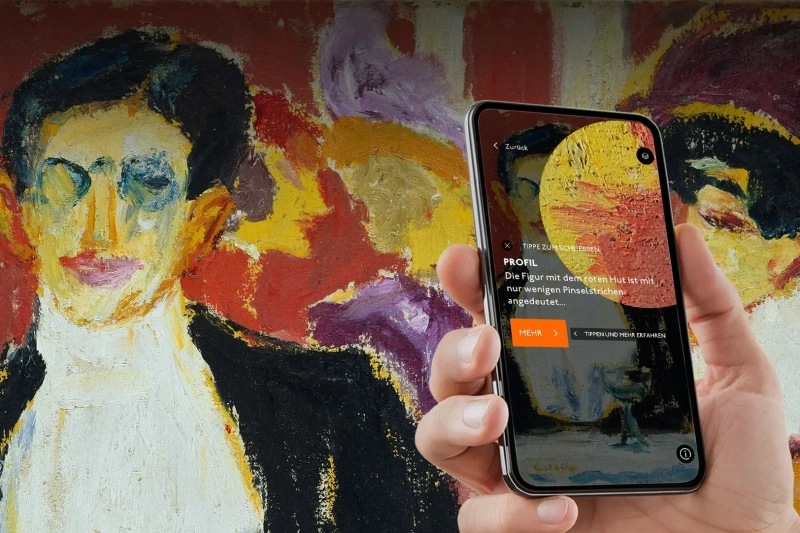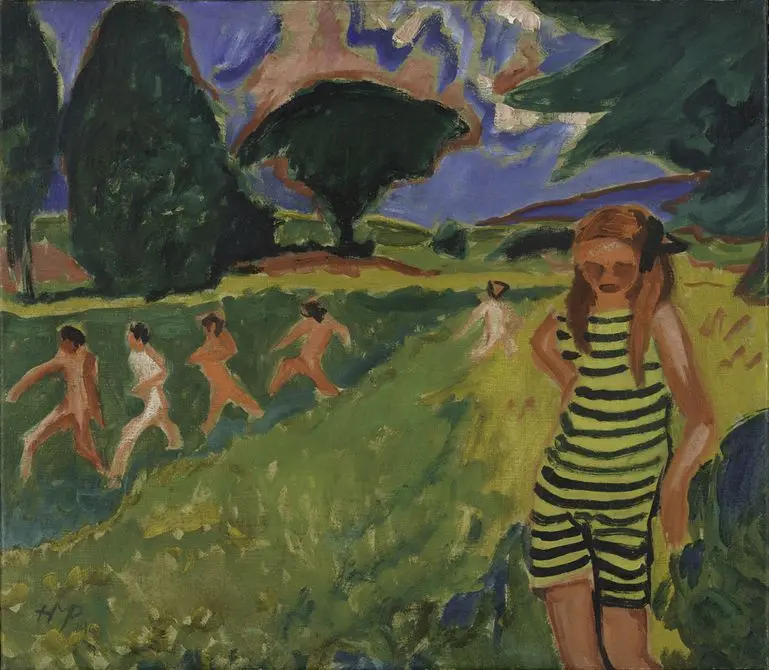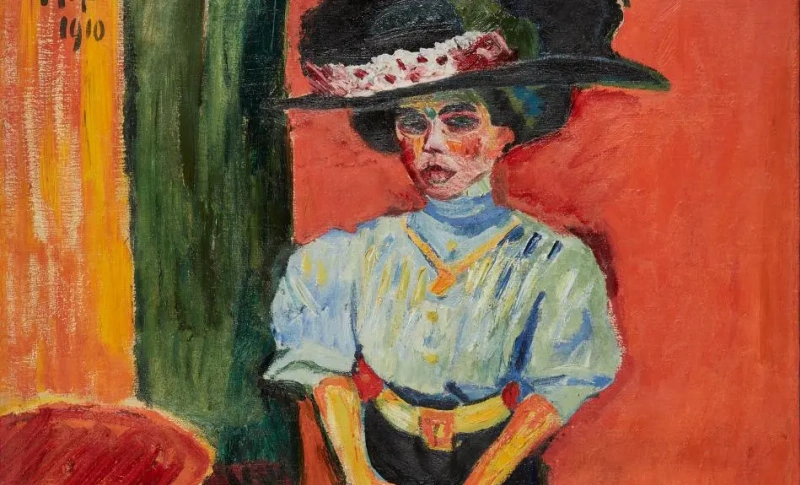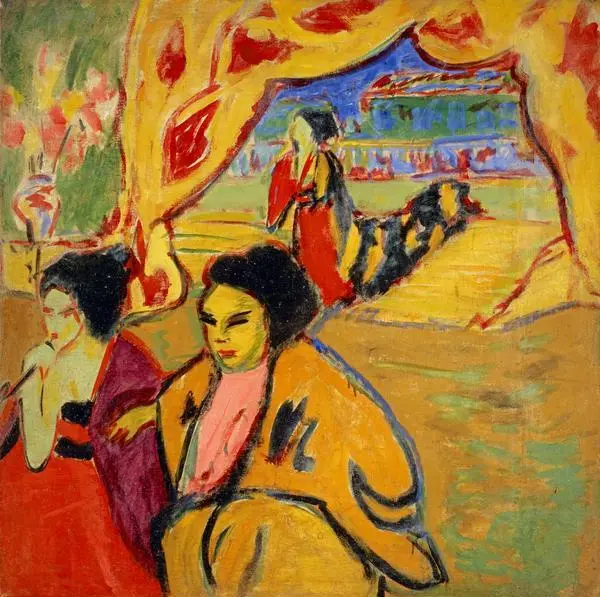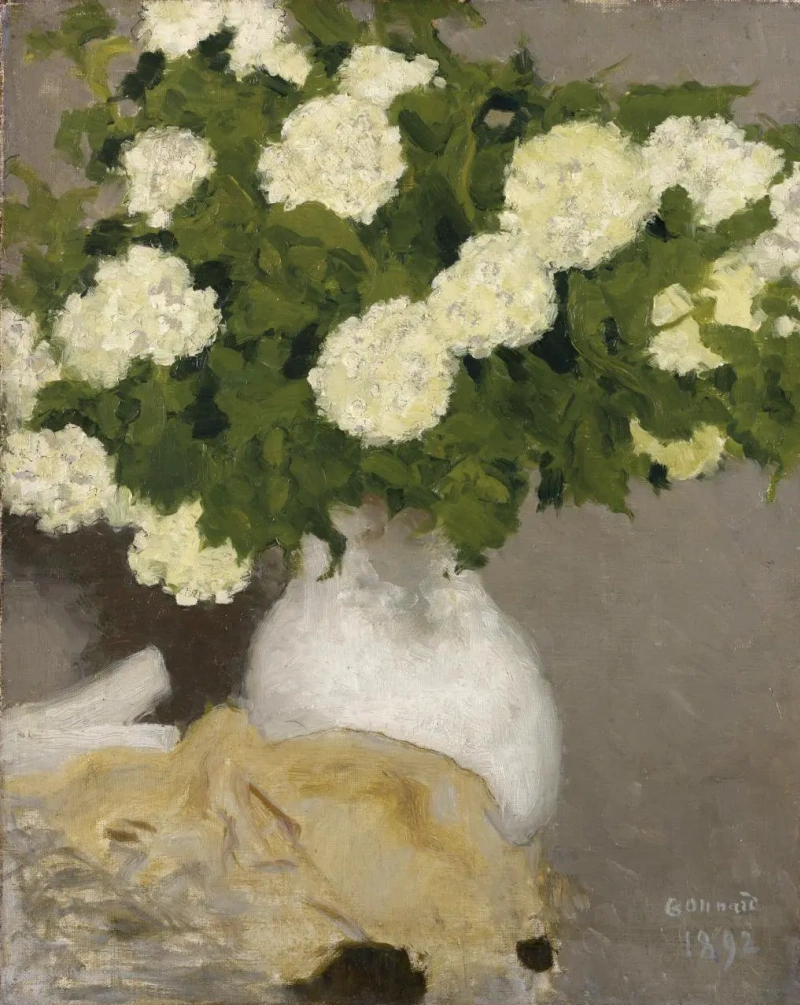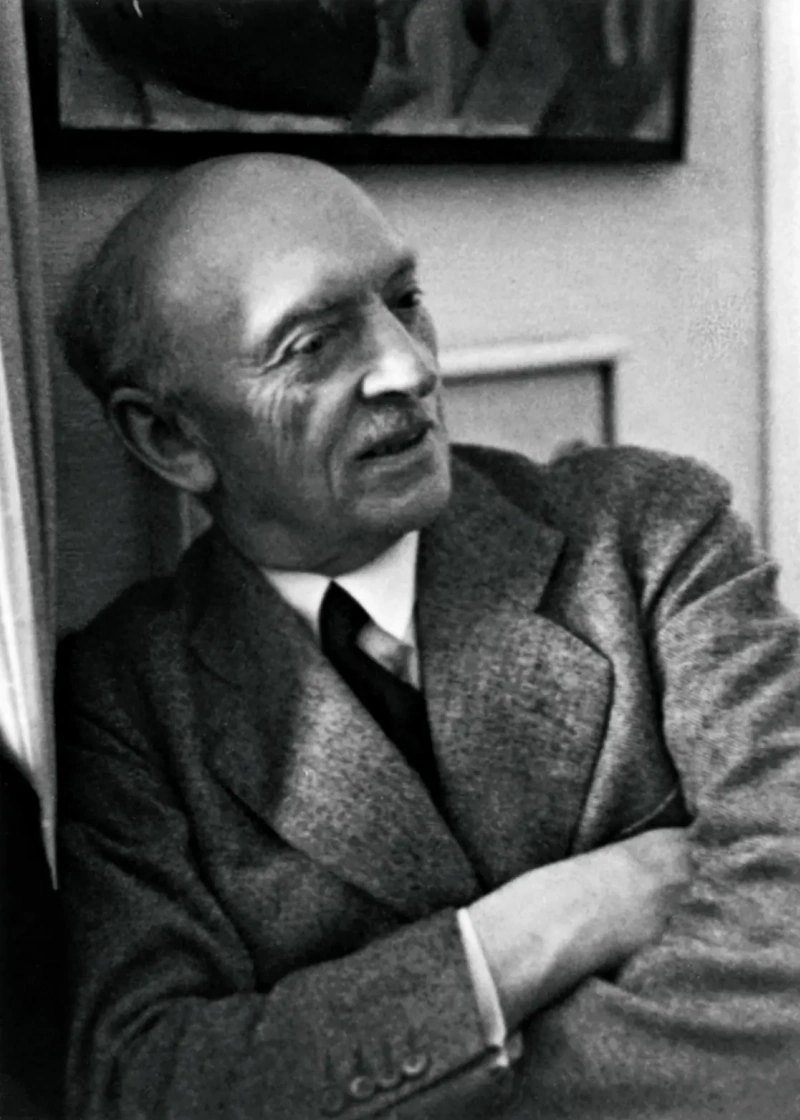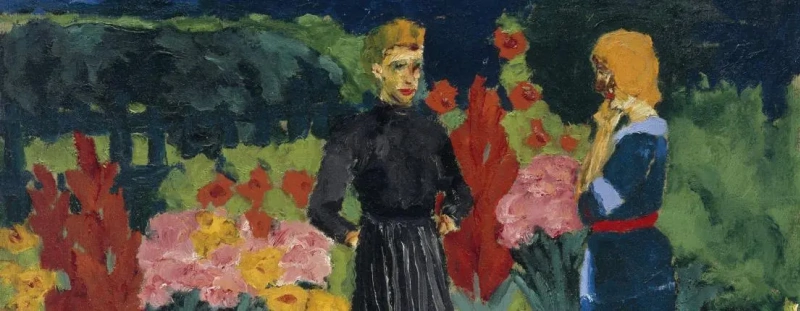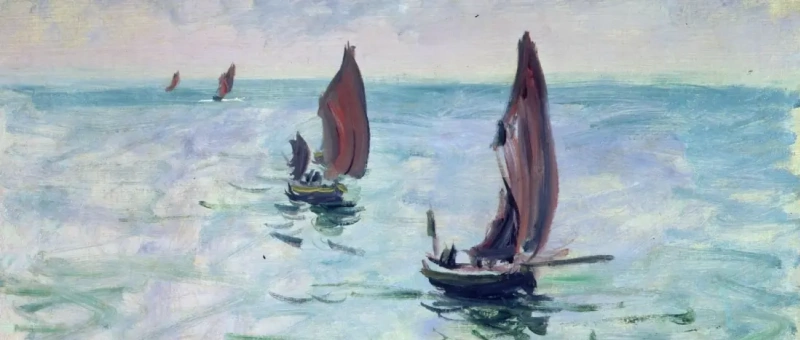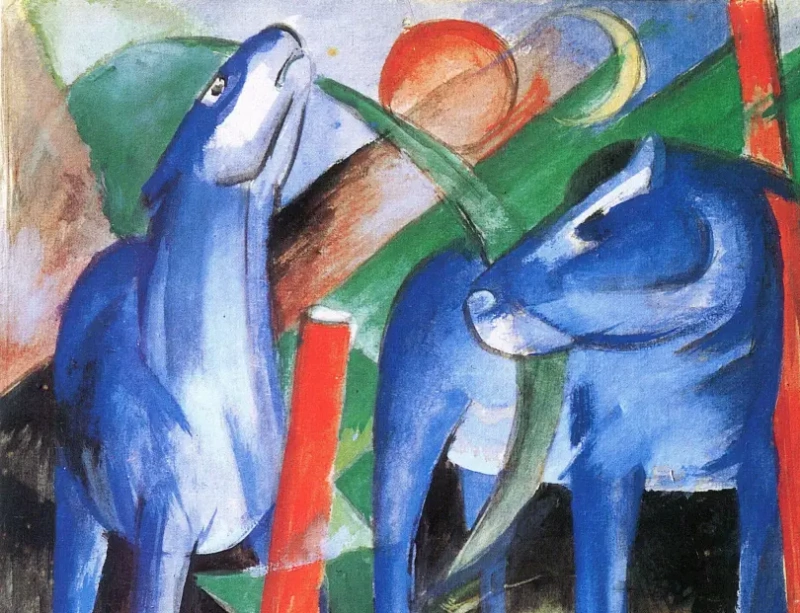log in
Enter site
Login to use Arthive functionality to the maximum
Emil Nolde, real name Hans Emil Hansen (German Emil Nolde, Hans Emil Hansen, August 7, 1867, Nolde, Prussia - April 13, 1956, Seebühl, West Germany) - German expressionist artist, a member of the famous artistic association "Bridge".
Features of the artist Emil Nolde: the mystical, fantastic, melancholic world of Nolde exists in extreme, terrible, tense states - the forms are grotesque, and the colors are extremely contrasting and saturated, through holes in habitual reality they crawl with phantasmagoric creatures with horns, paws and fancy faces. Even the watercolor landscapes Nolde eliminates transparency and saturates with thick layers of anxious colors: high, menacing skies and dense, heavy sea waves.
Famous paintings by Emil Nolde: "The Last Supper", "Death in the desert", "Children Papuans", "The colorful sky over the swamp", “Crucifixion of Christ”, "Women and Pierrot."
Emil Nolde was born a peasant. From generation to generation, his ancestors lived on a family farm on the border of Germany and Denmark, started working in early childhood, spoke the local language, went to the Protestant church, were devout, and knew little about other life. He does not strive to become an intellectual and will never get an academic education, but Emil left the farm as soon as he could.
At the age of 17 he goes to Schleswig, to the school of artistic crafts - he learns to cut wood and paint a little, decorates furniture and even restores church altars. He travels from city to city, learns a little, but barely enough money to study, works little by little, but quickly gives up in search of new opportunities. Unexpected success falls on Nolde, then Emile Hansen, in Switzerland, where he comes up with a series of postcards for borrowed money: these are pictures of famous mountains - each one is alive, smiling or angry giant, toothless old woman or a sly beauty. Then there will be Munich, a year in Paris, a passion Mane and impressionism and complete confusion, what to do next. The main organizing event for Nolde was a meeting with the members of the Art Association "Most", however, he stayed here for only a year.
The son of a farmer from Nolde, Emil, saw so many countries, lands, and nations as his rare contemporary could even list without stammering. In 1913, he went to New Guinea, then the German colony, as part of an expedition, traveled through Russia, Japan, China, many Asian countries and islands - and brought more than 80 paintings from a journey. He took the pseudonym Nolde for two - for himself and his wife, actress Ada Vilstrup, who shared with him many years of poverty, disease and travel, and then recognition and fame. He lived a strange life, not lingering anywhere for long, periods of alcoholic and drug frenzy followed by a frenzy of spiritual quest and religious revelation.
Nolde did not call himself an expressionist and chuckled at this journalistic term. He always insisted: I'm just a German artist. This mystical, mythological, emotional connection with the land, history, and cultural energy field was for Nolde a source of strength and self-determination. When the National Socialists came to power, Nolde felt that the dawn of his ideas and main hopes was near. He was closely acquainted with Heinrich Himmler and did not try to adapt to the new government - he simply believed that his works would finally be in demand, that he spoke with the new rulers of Germany in the same language, the language of greatness, the nation. Nolde was wrong. His scenic cycle "The Life of Christ" became one of the central exhibits of the exhibition "Degenerative Art", about a thousand works were destroyed, confiscated from museums and confiscated. Nolde refers to his membership in the National Socialist Party, writes letters to Himmler, believes that everything will change. But in 1941 he was expelled from the Academy of Arts, the Imperial Chamber of Visual Art and forbidden to work in any positions associated with the visual arts.
Until the end of the war, Nolde paints watercolor landscapes and flowers and buries them in his own garden, later the artist will call the cycle “Unwritten Pictures”. And after the war and the fall of the regime, Emil Nolde will receive various awards and medals, according to his own project he will build a house with a large workshop and a room for paintings. The expressionist Nolde, a former farmer Hansen, lived an unusually long life for his generation - he died in his home in Seebüle at the age of 89.
Author: Anna Sidelnikova
Continua a leggere
Features of the artist Emil Nolde: the mystical, fantastic, melancholic world of Nolde exists in extreme, terrible, tense states - the forms are grotesque, and the colors are extremely contrasting and saturated, through holes in habitual reality they crawl with phantasmagoric creatures with horns, paws and fancy faces. Even the watercolor landscapes Nolde eliminates transparency and saturates with thick layers of anxious colors: high, menacing skies and dense, heavy sea waves.
Famous paintings by Emil Nolde: "The Last Supper", "Death in the desert", "Children Papuans", "The colorful sky over the swamp", “Crucifixion of Christ”, "Women and Pierrot."
Emil Nolde was born a peasant. From generation to generation, his ancestors lived on a family farm on the border of Germany and Denmark, started working in early childhood, spoke the local language, went to the Protestant church, were devout, and knew little about other life. He does not strive to become an intellectual and will never get an academic education, but Emil left the farm as soon as he could.
At the age of 17 he goes to Schleswig, to the school of artistic crafts - he learns to cut wood and paint a little, decorates furniture and even restores church altars. He travels from city to city, learns a little, but barely enough money to study, works little by little, but quickly gives up in search of new opportunities. Unexpected success falls on Nolde, then Emile Hansen, in Switzerland, where he comes up with a series of postcards for borrowed money: these are pictures of famous mountains - each one is alive, smiling or angry giant, toothless old woman or a sly beauty. Then there will be Munich, a year in Paris, a passion Mane and impressionism and complete confusion, what to do next. The main organizing event for Nolde was a meeting with the members of the Art Association "Most", however, he stayed here for only a year.
The son of a farmer from Nolde, Emil, saw so many countries, lands, and nations as his rare contemporary could even list without stammering. In 1913, he went to New Guinea, then the German colony, as part of an expedition, traveled through Russia, Japan, China, many Asian countries and islands - and brought more than 80 paintings from a journey. He took the pseudonym Nolde for two - for himself and his wife, actress Ada Vilstrup, who shared with him many years of poverty, disease and travel, and then recognition and fame. He lived a strange life, not lingering anywhere for long, periods of alcoholic and drug frenzy followed by a frenzy of spiritual quest and religious revelation.
Nolde did not call himself an expressionist and chuckled at this journalistic term. He always insisted: I'm just a German artist. This mystical, mythological, emotional connection with the land, history, and cultural energy field was for Nolde a source of strength and self-determination. When the National Socialists came to power, Nolde felt that the dawn of his ideas and main hopes was near. He was closely acquainted with Heinrich Himmler and did not try to adapt to the new government - he simply believed that his works would finally be in demand, that he spoke with the new rulers of Germany in the same language, the language of greatness, the nation. Nolde was wrong. His scenic cycle "The Life of Christ" became one of the central exhibits of the exhibition "Degenerative Art", about a thousand works were destroyed, confiscated from museums and confiscated. Nolde refers to his membership in the National Socialist Party, writes letters to Himmler, believes that everything will change. But in 1941 he was expelled from the Academy of Arts, the Imperial Chamber of Visual Art and forbidden to work in any positions associated with the visual arts.
Until the end of the war, Nolde paints watercolor landscapes and flowers and buries them in his own garden, later the artist will call the cycle “Unwritten Pictures”. And after the war and the fall of the regime, Emil Nolde will receive various awards and medals, according to his own project he will build a house with a large workshop and a room for paintings. The expressionist Nolde, a former farmer Hansen, lived an unusually long life for his generation - he died in his home in Seebüle at the age of 89.
Author: Anna Sidelnikova
-
Le opere sono piaciute a159 users
- Artworks in 3 collections and 182 selections
Публікації
Виставки
Всі виставки художника
Автопортрет
1947, 87×68 см

Закат над голубыми горами
1945, 21×15 см

Большой подсолнух и клематис
1943, 67×88.5 см

Цветы
1939, 88×73 см

Молодая пара
1935, 50×35 см

Молодая пара
1935, 53×36 см

Пейзаж
1935, 34×47 см

Георгины и дельфиниумы
1928, 74×88 см

Лохматые осенние облака
1927, 73.5×88.5 см

Дети рыбака
1926, 66.8×86.3 см

Лодка в море
1921, 73×100 см
Стрічка
Завершено виставку
"Обычно я начинаю мелом...". Техники живописи Эмиля Нольде

16 жовтня 2021 − 18 квітня 2022 Гамбургский Кунстхалле, Гамбург, Глоккенгиссервалль, 5

16 жовтня 2021 − 18 квітня 2022 Гамбургский Кунстхалле, Гамбург, Глоккенгиссервалль, 5



